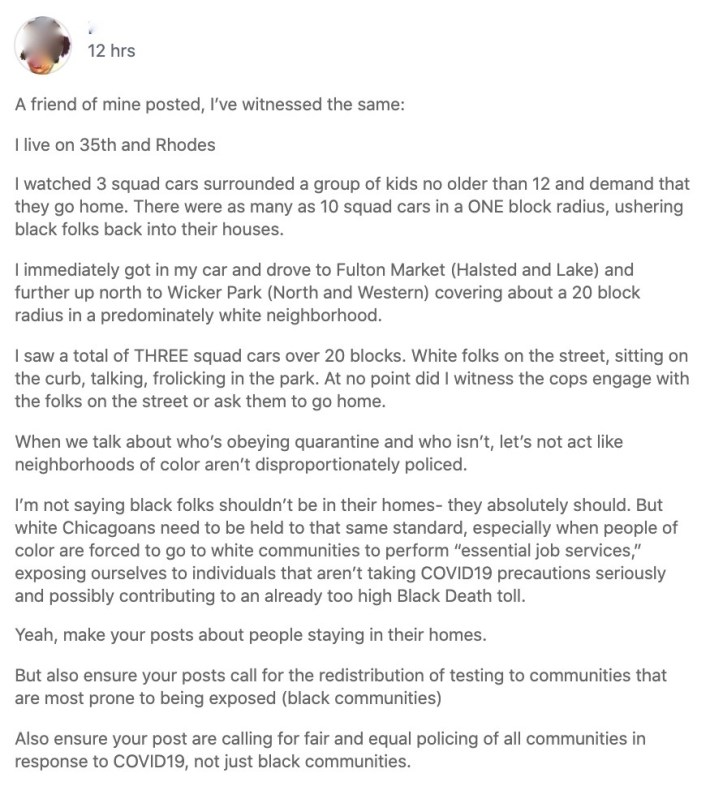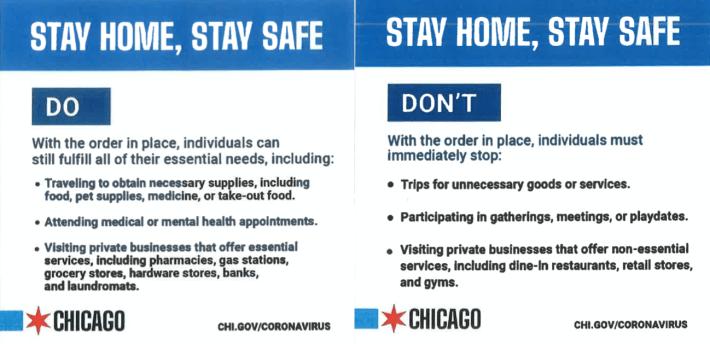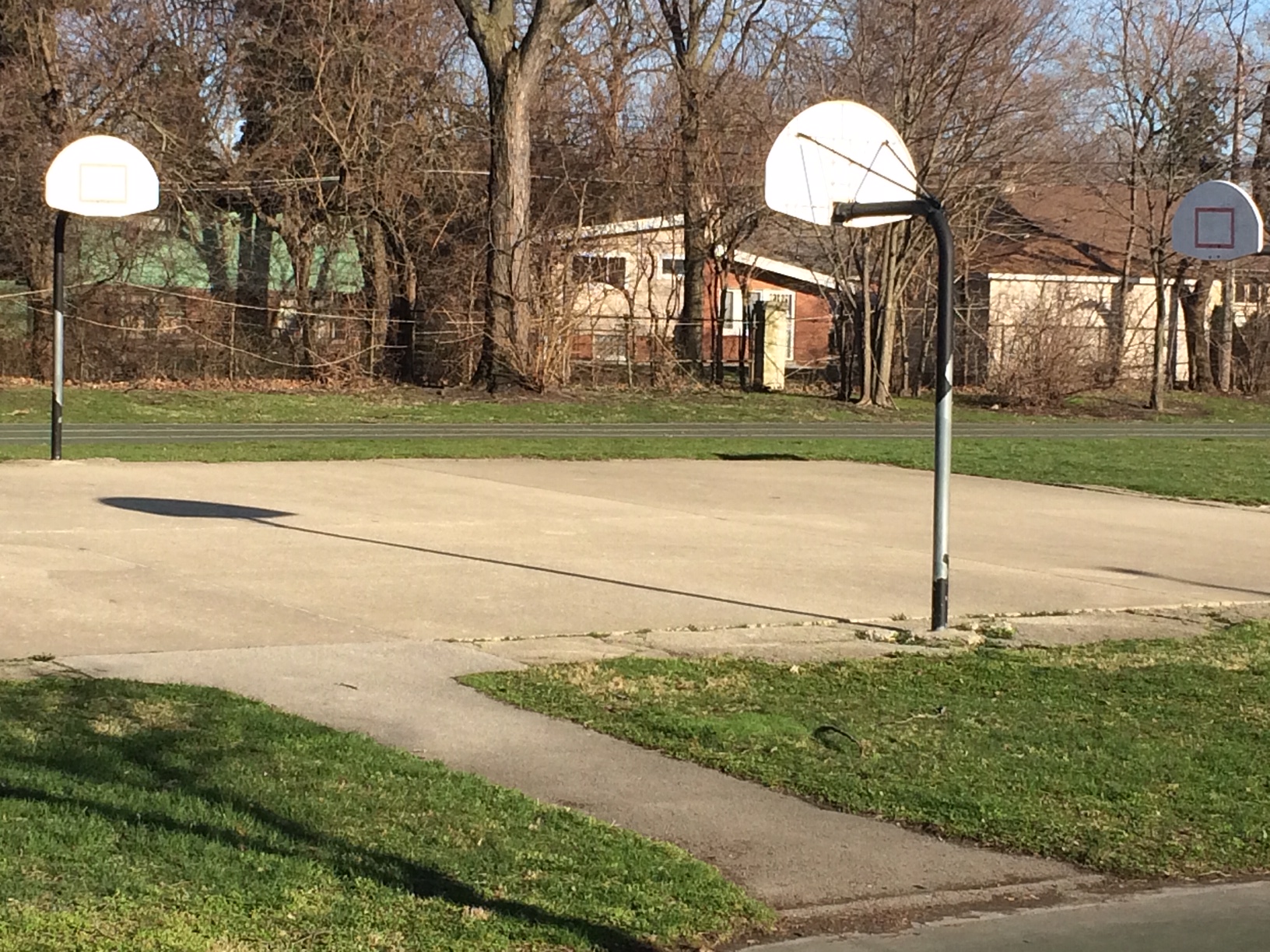We've had gorgeous weather in Chicago these past two days, and it's unrealistic to expect that residents aren't going to go outside and enjoy it. That's especially true since "walking, hiking, running, or biking... [in] public parks and open outdoor recreation areas," with proper 6'+ social distancing, are classified as "essential activities" under Illinois' Stay at Home order.
But to prevent the spread of COVID-19, it's important that any outdoor activity be done responsibly, within the parameters of the order. In particular, it's crucial to refrain from congregating in close proximity with non-household members, playing team sports with people you don't live with, or using playground equipment, since these are very dangerous behaviors from a COVID-19 transmission standpoint.
As such, the city of Chicago should be doing more outreach and education about why these particular outdoor activities are harmful during the pandemic, and taking steps to prevent them, like removing basketball hoops (as seen in the above photo), soccer goals, and volleyball nets from public parks, and fencing off playgrounds. Ideally the rules in parks would be enforced by Chicago Park District staffers rather than police, to minimize the potential for confrontations escalating into violence. However, it makes sense for officers to intervene if they witness people hanging out in groups of, say, more than six people, or playing team sports.
We saw that on March 25, when nice weather brought out what appeared to be a predominantly white crowd of young people to North Avenue Beach, including many who ignored social distancing rules by congregating and playing sports like football and volleyball. Police cleared out the lakefront that evening, and the next day Mayor Lori Lightfoot responded by shutting down all lakeside parks, as well as the Chicago Riverwalks, and The 606 and its access parks, for the duration of the pandemic.
Streetsblog readers have also alerted us to several other North, Northwest, and West side parks that were temporarily or permanently closed, possibly due to park users violating social distancing rules. These include Wicker Park, Humboldt Park, Churchill Field Park, Gross Park, Horner Park (which was open yesterday evening), Athletic Field Park, Walsh Park, and Dean Park. I also saw a report on Facebook that yesterday afternoon "a TON of police" were up on The 606 because "a large number of people went through the tape [on The 606] and were up on the trail and CPD was called in to clear them out." The same types of park closures are certainly happening in other parts of town.
This morning I saw the following Facebook post describing a troubling enforcement incident in the majority-Black Douglas community area on the Near South Side.

Again, if people are hanging out in large groups in close proximity, that's dangerous, and the police should tell them to split up. But if the folks "sitting on the curb, talking, [and] frolicking in the park" were doing so with social distance, that's not particularly dangerous and doesn't call for police intervention. Moreover, leaving the house to recreate does not equal disobeying the quarantine.
However, the post brings up several important points. While it would be appropriate for an officer to tell a large group of kids to disperse, clearly police in three squad cars surrounding a group of young children was unnecessary and harmful.
The poster is also correct that, since more police are typically stationed in communities of color with high crime rates than majority-white areas, it's way more likely Black and Latino residents who break the SAH rules will be held accountable than their white counterparts.
And the person's arguments about people of color being at a higher risk of contracting COVID-19 because they're more likely to have to show up to work essential jobs, rather than having the privilege of working from home, as well as the need to focus pandemic resources on Black communities, which are seeing much higher fatality rates than white ones, are totally on-point.
The poster raises the larger issue of why saturation policing of POC neighborhoods is problematic. If there's a double standard for Black and Latino communities versus majority-white neighborhoods in terms of crackdowns on SAH order violations, that needs to stop. And if officers are telling people in Black or Latino neighborhoods spending time in public that they need to go home regardless of what they're doing, that needs to be called out.
And this isn't the only case where enforcement of the SAH order has raised red flags. Recently the Chicago Police Department set up checkpoints on some blocks of West Garfield Park, strictly limiting access to residents in the name of promoting social distancing. The American Civil Liberties Union of Illinois, and even some officers, have argued this is likely unconstitutional.

And yesterday night the CPD began conducting "roadside safety and informational checkpoints" in each police district, continuing through Thursday. These policing events will last about 45 minutes each night between 10 p.m. and 2 p.m. "The interactions with the public will focus on traffic safety and providing information on the Illinois Stay at Home order," said a police spokesperson.
Asked for info that might reassure residents who may be concerned these pandemic traffic stops will be used as a pretext to conduct searches, CPD spokesman Anthony Guglielmi responded, "People can think of these [as] public education checkpoints. Our goal is to set these up in various districts and educate the public on the latest guidance for stay-at-home orders and wearing masks. This is not an opportunity to cite people for violating the order."
A January 2019 report from the ACLU of Illinois found that about 60 percent of the drivers pulled over by Chicago police in recent years were Black, even though African Americans only make up about a third of the city’s population. However, motorists of color who were stopped were less likely to be carrying contraband than their white counterparts.
Here are some tips on preventing the spread of COVID-19, and advice for Chicagoans on what to do if you think you may have been exposed to the virus.




